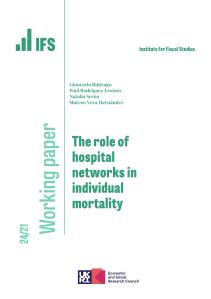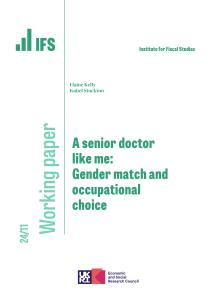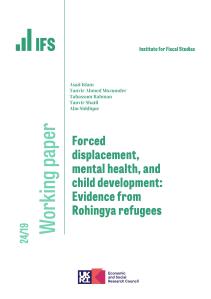The government is proposing to change the legislation underlying the new £86,000 cap that people will have to pay towards their own social care costs. The amendment means that receipt of means-tested support to pay for care will not count towards the cap.
A joint Institute for Fiscal Studies (IFS) and Health Foundation report, funded by the Health Foundation, released today, finds that the proposed government amendment would impact most strongly those older people with modest levels of wealth. Those with wealth, including their home, of around £75,000 to £150,000 would face the biggest loss of protection as a result of the amendment. The result is that someone with around £110,000 in assets could lose 78% of their total wealth even after the cap is in place, while someone with £500,000 could use up only 17%.
Given that levels of wealth vary substantially across England, those in the North East, Yorkshire and the Midlands, where wealth tends to be lower, would see the biggest erosion of their protection against large care costs, as a result of the proposed amendment.
In September, the government announced a cap on lifetime social care costs in England, beginning in October 2023 and set at a level of £86,000. When the possibility of a cap was first legislated for in the 2014 Care Act, total care costs incurred – including those covered by council funding for those with low assets or income – were to count towards the cap. However, in November 2021, the government proposed to amend the Care Act so that only the amount someone spends themselves would count towards the cap. This amendment is now being considered by Parliament.
Key findings from the briefing include:
- Those with moderate income or assets, and who receive means-tested support to help them with care costs, would have to contribute to their own care costs for longer. Without the government’s amendment, someone needing residential care costing £700 per week would reach the cap after 3 years and 4 months, regardless of their levels of income and assets. With the amendment, someone with that care need who has annual income of £16,000 and assets of £100,000 would take almost 6½ years to reach the cap. With that income, but assets of over £175,000, they would still reach the cap after just 3 years and 4 months.
- Those experiencing costly care journeys, and who would be eligible for means-tested support, would make contributions for longer and spend more on their care. Under a ‘catastrophic’ cost scenario of a decade spent in residential care, someone with £106,000 in assets and annual income of £11,800 would be most affected. Under the government’s plans, their contribution towards their care would be £76,000, or 71% of their assets, compared with £44,000, or 41% of their assets, under existing legislation. Those with assets of over £186,000 would be unaffected.
These effects would impact most strongly on those in the second quintile of the wealth distribution:
- The government’s proposed amendment would mean that a 10-year residential care journey would consume an additional 10% of assets or around £12,000, on average, for those in the second wealth quintile (those in households with wealth per person of between £83,000 and £183,000). This compares with negligible effects for the wealthiest 40% – those with assets over £298,000.
Levels of wealth vary substantially across England. Those in the North East, Yorkshire & the Humber and the Midlands, where wealth tends to be lower, would see the biggest erosion of their protection against large care costs, as a result of the proposed amendment:
- Average per-person wealth among the 65-and-older population in the North East, where average house prices are £150,000, is around £150,000. This compares with an average of around £490,000 in London.
- If they were to spend 10 years in residential care, one in four individuals in the North East would have to contribute an additional 10% of their initial assets to cover their care costs, as a result of the amendment. This compares with just one in forty of those in London.
The government’s proposed amendment would not substantially change the number of people at risk of having to use their housing wealth to pay for a long period of residential care since most who would receive means-tested support and have some housing wealth would have to draw on it even under the system without the amendment.
David Sturrock, a Senior Research Economist at IFS, said:
‘The new social care cost cap is important not just for those who end up having large care costs. Given the unpredictability of future care needs, it offers many people peace of mind and an ability to plan. The government’s proposed amendment would significantly reduce those benefits for those with moderate assets and income. This disproportionately affects those in the North East, Yorkshire & the Humber and the Midlands, given lower house prices and wealth levels in those regions compared to the South of England. This change seems to cut across the government’s plans to “level up” across regions.’
Charles Tallack, Assistant Director for the REAL Centre at the Health Foundation, said:
“The government’s proposed amendment to the Care Act will, in effect, increase the time it could take for some poorer people to reach the £86,000 cap on care costs. So far Parliament has been voting in the dark on this issue, having had insufficient information about its impact and which groups of people would be affected. This independent analysis will help to shed light on this and ensure that as the amendment is further debated and voted on, peers and MPs can fully understand its impacts on people who need care.”









